In the charming district of Checacupe, where history intertwines with geography, a unique jewel is revealed that captivates those who seek to immerse themselves in the cultural richness of Peru. We refer to the three bridges that stand as silent witnesses to the passage of time, each telling its own story in the complex web of Peruvian history. In this article, we will explore in detail the reasons that make these bridges famous, their location, altitude, and how to get there from the majestic city of Cusco.
Checacupe and its Bridges: A Spatial-Temporal Overview
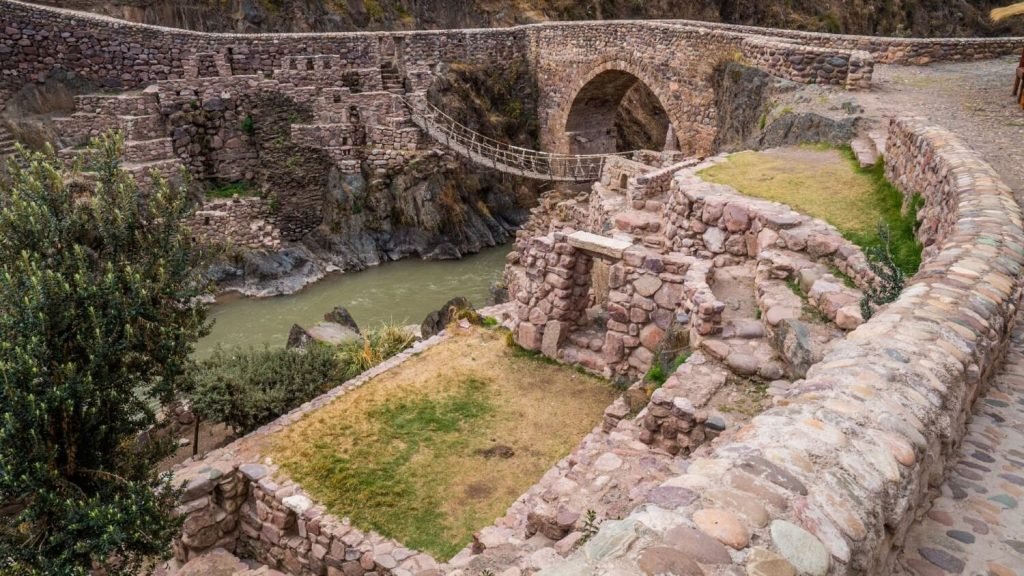
Why is Checacupe famous for its bridges?
- In this district, bordered by the waters of the Vilcanota River, the space-time peculiarity comes to life. A few minutes away from the Plaza de Armas, there are three bridges that embrace different periods of Peruvian history. This spatio-temporal amalgam, a unique phenomenon, has no parallel in any other corner of the country.
Where is Checacupe?
- Checacupe is located in the province of Canchis, 2 hours and 30 minutes from the Imperial City of the Incas. Surrounded by the districts of Cusipata and Checacupe, this geographical enclave offers a journey through time and culture.
What is Checacupe’s altitude?
- Located at 3,450 meters above sea level, Checacupe’s cold and dry climate creates a perfect backdrop for exploring its rich heritage.
How to get there from Cusco?
- From the city of Cusco, Checacupe can be reached in several ways: by purchasing a bus ticket on the route from Cusco to Sicuani, by private vehicle on a paved road in excellent condition, or by enjoying a tour organized by local agencies.
Living History at the Checacupe Bridges
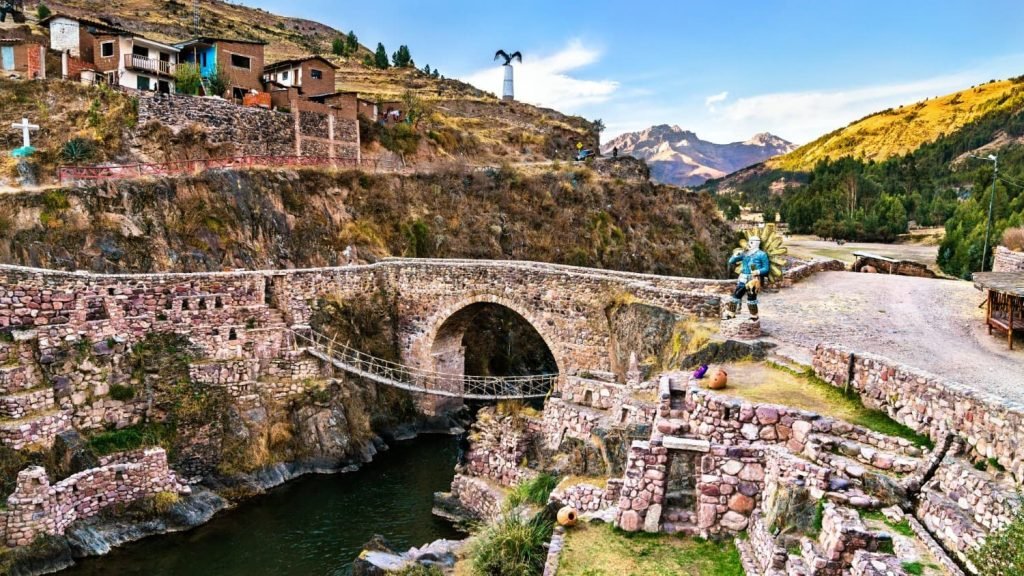
History of the Checacupe Bridges
The uniqueness of Checacupe lies in the presence of three bridges that narrate different chapters of Peruvian history:
Inka Bridge:
- Erected in 1448 to integrate the network of Inca Trails (Qhapac Ñan), this hanging bridge, woven with straw, is periodically replaced by local inhabitants.
The colonial bridge:
- Built between 1759 and 1799 by order of King Charles III of Spain, this ashlar stone bridge displays a robust architecture comparable to Roman arches.
The Republican Bridge:
- Built in 1895, this metal bridge marks the evolution towards modernity, allowing the transport of heavy loads and larger vehicles.
Just five minutes away from these bridges is the “Munaypata” theme park, where sculptures of the Andean cosmovision, made with recycled tires, offer another artistic perspective.
Plan your trip to Checacupe
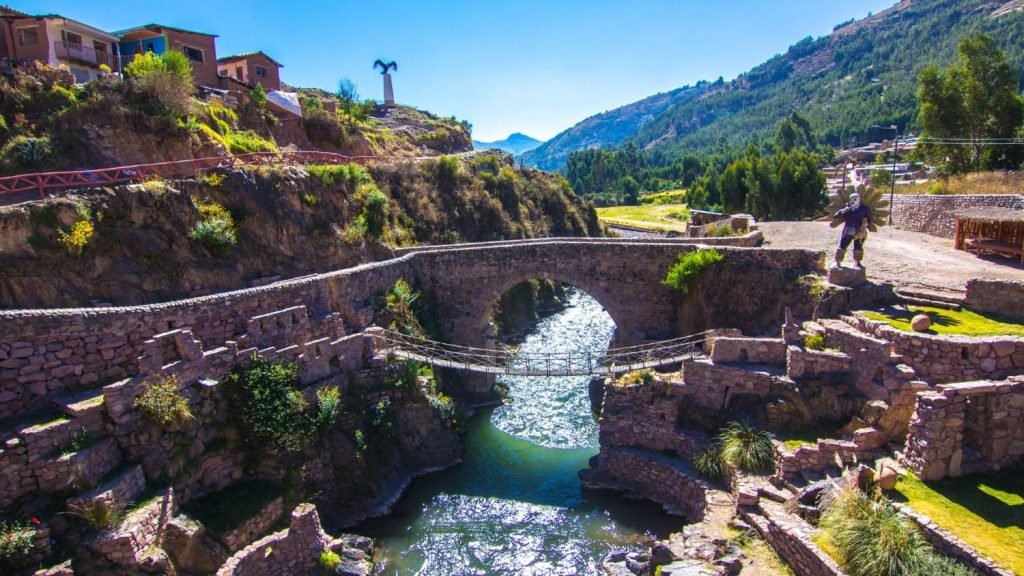
How much does it cost to visit the Checacupe bridges?
- The cost of the trip can vary between 10 and 15 soles, depending on the means of transportation. To explore the Inka Bridge, the symbolic entrance fee is approximately 2 soles.
What else to see near Checacacupe?
- In this charming district, the cultural richness is displayed in places like the temple of the Immaculate Virgin, the Casona Checacupe and a theme park of Andean mythology. In addition, Checacupe serves as a starting point to the snow-capped Ausangate, the Vinicunca mountain and the Pitumarca valley.
Photo Gallery and Frequently Asked Questions
Checacupe Photo Gallery
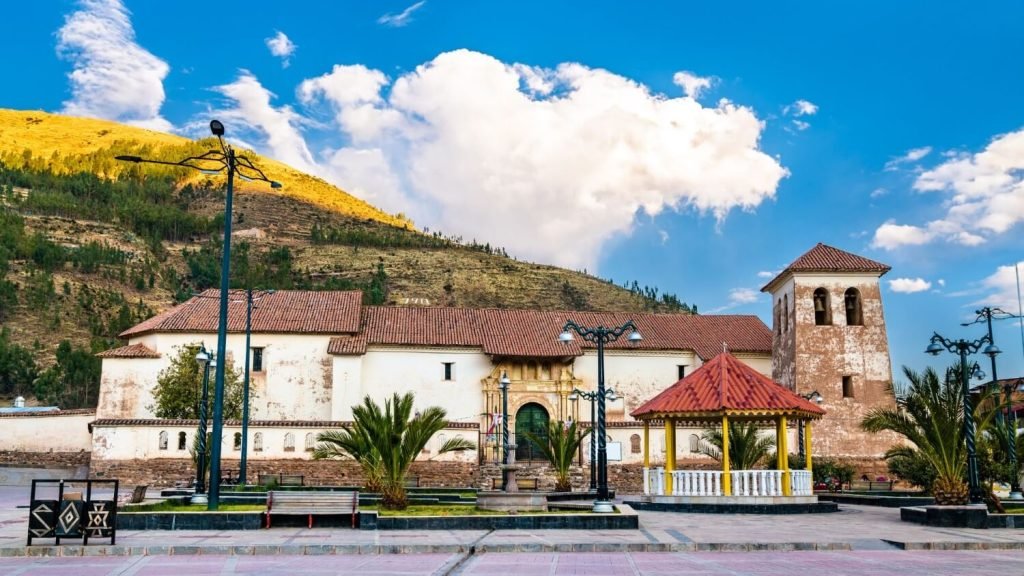

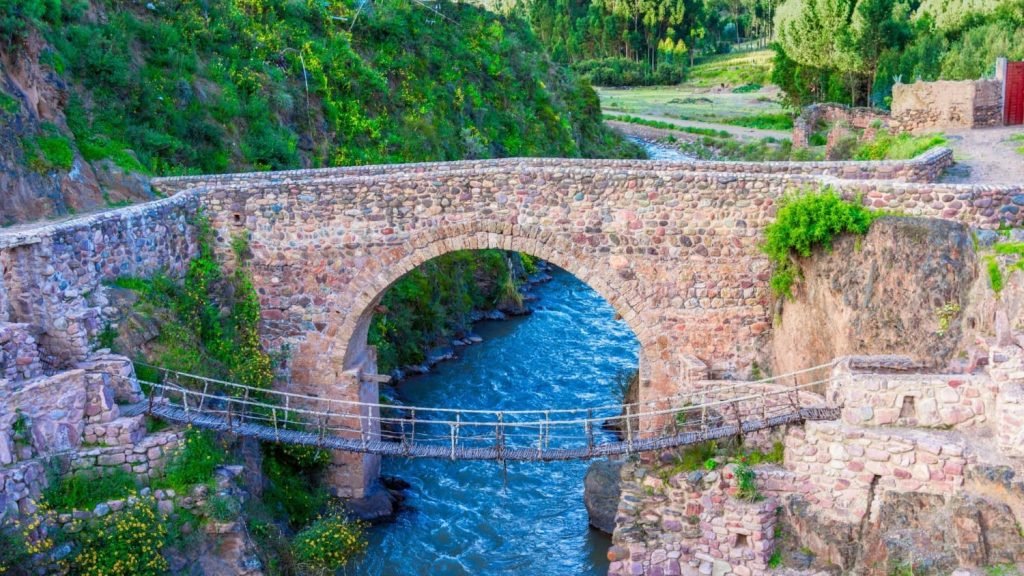
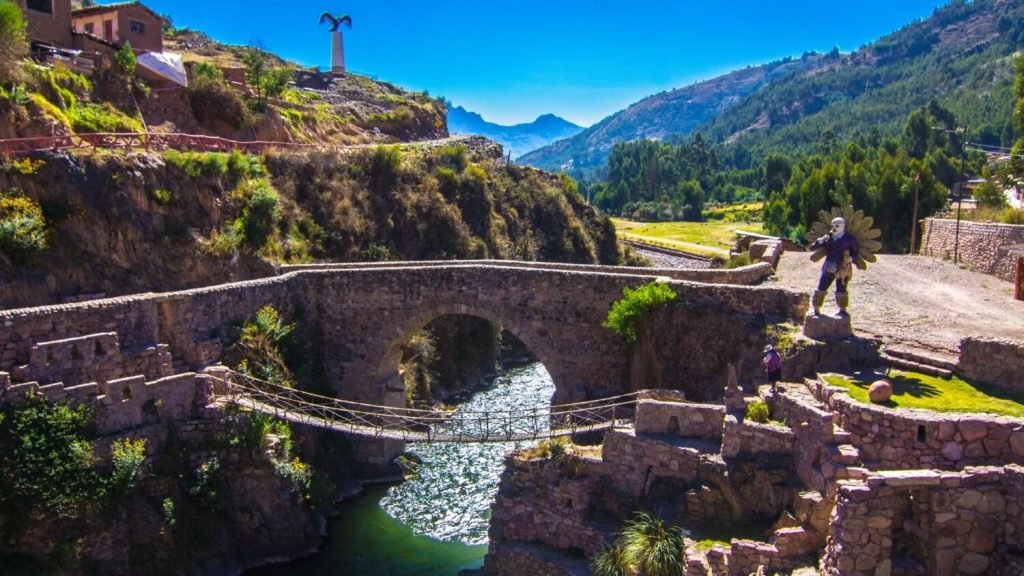


Questions and answers about the trip to Checacupe and its bridges
1. What is the town of Checacupe in Cusco famous for?
Checacupe stands out for its three bridges, witnesses of time and starting point to explore destinations such as the Ausangate snow-capped peak and the Vinicunca mountain.
2. What is the Inca bridge of Checacupe like?
The Inca bridge, woven with straw and stone foundations since 1448, reveals the ancestral skill of the local inhabitants.
3. What is the Checacupe colonial bridge like?
This sturdy ashlar stone bridge, compared to Roman arches, shows architectural details that make it a unique jewel.
4. What other Inca bridges can you see near Checacupe?
Other Inca bridges, such as Q’eswachaka and Chakapata in Combapata, enrich the experience of exploring the region.
5. What other colonial bridges can you see near Checacupe?
Colonial bridges in Combapata, Quiquijana and Tinta offer a glimpse into the region’s colonial past.
6. How much is the entrance fee to the Checacupe Inca bridge?
The symbolic entrance fee to the Inca bridge is 2 soles, contributing to its conservation.
7. Are there restaurants near Checacupe?
Yes, the area has several tourist restaurants that offer local delicacies such as guinea pig and trout.
8. What is the climate like in Checacupe?
Located at 3,450 meters above sea level, Checacupe enjoys a cold and dry climate, especially from March to August.
9. What should I bring to Checacupe?
It is recommended that you bring warm clothes, a hat, sunscreen, and, most importantly, a camera.
10. Which public transportation bus will take me to Checacupe from Cusco?
The bus terminal is located at 1620 Huayruropata Avenue and offers options from 10 soles to get to Checacupe.
11. What are the visiting hours of the Inca bridge of Checacupe?
The Checacupe Inca Bridge is open for visits every day of the week from 8 a.m. to 6 p.m.




